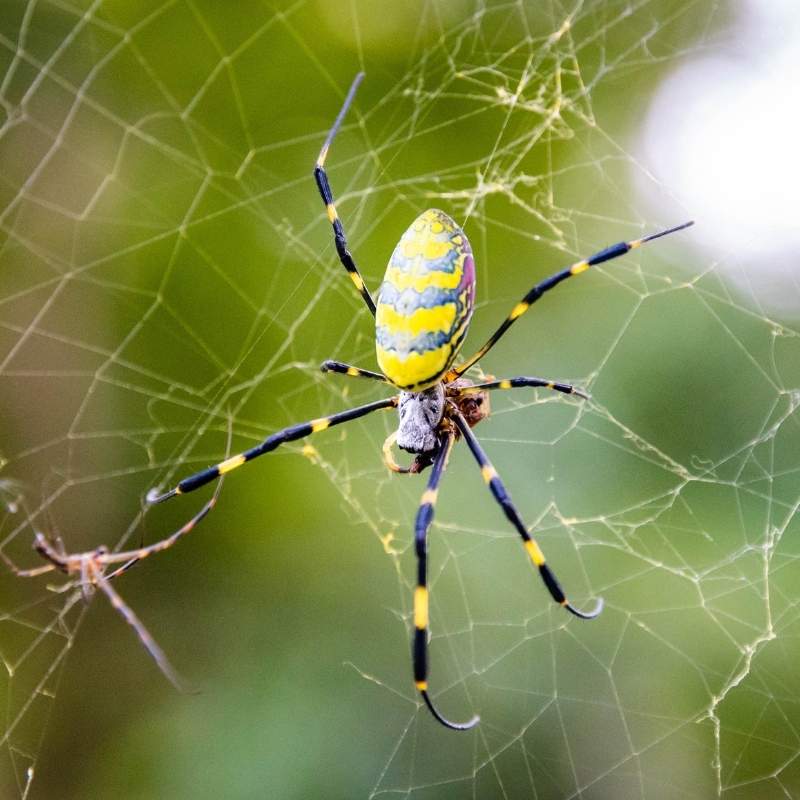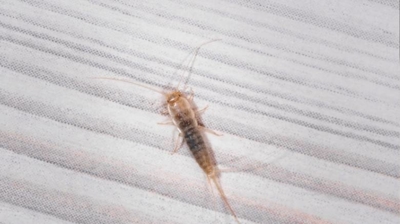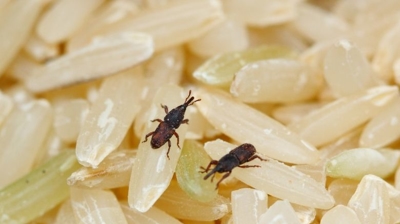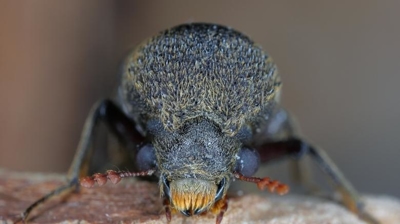
Joro Spider Control Services

Are Joro Spiders Harmful?
Joro spiders (Trichonephila clavata), an invasive species native to East Asia, have garnered significant attention in the United States, particularly in the southeastern regions where they’ve become increasingly prevalent. Here are some of the ways in which Joro spiders may be considered harmful or problematic:
- Public Nuisance and Human Perception: While Joro spiders are not aggressive and their bites are not considered medically significant to humans, their large size, bright appearance, and tendency to colonize urban and suburban areas can cause distress. For individuals with arachnophobia or general fear of large spiders, the presence of Joro spiders on porches, decks, trees, and even power lines can be alarming and cause emotional stress. Their massive webs can be an inconvenience across walking paths, doorways, and driveways, especially when they appear in high densities during peak months. Exaggerated media portrayals and myths about their toxicity or aggressiveness can exacerbate public fear, leading to unnecessary panic and overreactions.
- Potential for Long-Distance Spread: Joro spiders have a high reproductive rate and utilize a dispersal technique called “ballooning,” where spiderlings ride air currents using silk threads. This allows them to spread rapidly over long distances, particularly aided by human transportation (e.g., in vehicles or shipping materials). As they continue to expand their range, northern areas, previously considered unsuitable, may now support Joro spiders due to their ability to tolerate colder temperatures. This broadens the scope of their potential impact. As a relatively recent introduction to the U.S., the full extent of their ecological and economic impact remains unclear. Invasive species often display delayed negative effects that only become apparent after years of unchecked spread.
Perhaps the most significant concern with Joro spiders is their potential to disrupt local ecosystems. Joro spiders are large orb weavers that build expansive, three-dimensional webs capable of capturing a wide variety of flying insects. This non-selective predation could outcompete or reduce populations of native spiders and other insectivores that rely on the same food sources. Native orb-weaving spiders, such as the golden silk orb-weaver (Trichonephila clavipes) and the garden spider (Argiope aurantia), may be displaced by Joro spiders due to competition for space, resources, and territory. By modifying insect population dynamics, Joro spiders could inadvertently affect the predators and parasites that rely on those insects, leading to a cascade of ecological effects.
Learn more: Do Joro Spiders Bite?
Joro Spider Control
Hiring our professional pest control for Joro spiders is strongly recommended for several reasons, especially if you are seeing these spiders around your home or property:
- Correct identification: Joro spiders (Trichonephila clavata) are large, brightly colored orb-weavers originally from East Asia. While generally not deadly to humans, they can be confused with other more harmful species.
- Infestation assessment: Our professionals can determine if you have a single spider, a few webs, or a growing population. Joro spiders can spread quickly if conditions are favorable.
- Precision control: Over-the-counter sprays often fail to remove all Joro spiders or their egg sacs. Our professionals use targeted insecticides and treatments that reach hidden areas where spiders hide or lay eggs.
- Preventive measures: We can treat both indoor and outdoor areas to prevent webs near doors, windows, eaves, and garden structures.
- Egg sac danger: Joro spider egg sacs are yellow and can contain hundreds of eggs. If not removed, your spider problem can multiply exponentially the following season.
- Safe handling: Our professionals have the tools and protective equipment to remove egg sacs without accidentally releasing spiders into your home.
- Avoid bites and allergic reactions: While Joro spider bites are rare and generally mild, some people can have allergic reactions. Our professionals minimize human exposure during removal.
- Safe pesticide application: Our licensed pest control technicians use products and methods that comply with safety regulations, reducing risk to children, pets, and the environment.
- Web and population monitoring: Our pros know the areas where Joro spiders are likely to settle and can provide ongoing monitoring.
- Barrier and exclusion strategies: We can implement physical and chemical barriers to keep spiders away from high-traffic areas like patios, entrances, and gardens.
- Labor-intensive removal: Removing large webs and egg sacs yourself is time-consuming and messy.
- Peace of mind: Hiring our professionals saves time and gives you assurance that the infestation is being handled correctly and comprehensively.
Joro spiders might not be aggressive, but their rapid reproduction and web-building can make them a nuisance. Our professional pest control ensures the spiders and their eggs are effectively removed, your home is protected long-term, and safety risks are minimized.
Learn more: How To Get Rid Of Joro Spiders
What Do Joro Spiders Look Like?
Joro spiders (Trichonephila clavata) exhibit distinct sexual dimorphism, meaning that males and females have notably different appearances. Here's what Joro spiders look like:
Female Joro Spiders:
- Size: Adult female Joro spiders are significantly larger than males. They typically measure between 1 to 1.5 inches in body length, not including their legs.
- Coloration: Females are known for their striking and vibrant coloration. They have a predominantly yellow body with bold black markings, creating a stark and visually appealing contrast. Their abdomen, in particular, displays intricate yellow and black patterns.
- Abdomen: The most distinctive feature of female Joro spiders is their abdomen. It is spherical and adorned with a pattern that often resembles an hourglass shape, typically with the wider portion at the posterior end of the abdomen. This hourglass pattern varies in detail from one individual to another.
- Legs: They have long, slender legs, which are often yellow or light brown in color.
Male Joro Spiders:
- Size: Adult male Joro spiders are considerably smaller than females, typically ranging from 1/3 to 1/2 the size of the females.
- Coloration: In contrast to the vibrant and conspicuous coloration of the females, males have a more subdued appearance. They are generally brownish in color, lacking the vivid yellow and black patterns found in females.
- Abdomen: The male's abdomen is less pronounced and lacks the characteristic hourglass pattern.
The striking appearance of the female Joro spider, with its vibrant yellow and black coloration and intricate abdominal patterns, is one of the key factors that contribute to their cultural significance and fascination in their native range, particularly in Japan.
Where Are Joro Spiders Found?
Joro spiders (Trichonephila clavata) are typically found in specific types of habitats within their native range in Japan and nearby regions. Here are some of the types of habitats where you might encounter Joro spiders:
- Deciduous and Mixed Forests: Joro spiders are commonly found in deciduous and mixed forests, where a variety of tree species are present. They often build their orb-shaped webs among the trees and shrubs in these wooded areas.
- Riparian Zones: Riparian zones, which are areas adjacent to rivers, streams, ponds, and other water bodies, are favorable habitats for Joro spiders. The proximity to water sources provides an increased presence of flying insects, which the spiders rely on for food.
- Semi-Urban and Rural Areas: Joro spiders can occasionally be found in semi-urban and rural environments where natural vegetation and green spaces still exist. Gardens, parks, and rural landscapes with lush plant life may support these spiders.
- Vegetated Areas with Diverse Flora: Habitats with a diverse range of plant species can attract a variety of insects, making them suitable for Joro spiders. Botanical gardens, nature reserves, and other areas with rich and varied plant life may host these spiders.
- Temperate Climates: Joro spiders are adapted to temperate climates and are most commonly found in regions with distinct seasons and moderate temperatures.
What Do Joro Spiders Eat?
Joro spiders (Trichonephila clavata) are carnivorous creatures that primarily feed on flying insects. Their diet consists of a variety of insects that they capture in their large, intricate orb-shaped webs. Here are some of the insects and other prey items that Joro spiders commonly consume:
- Moths: Moths are a significant part of the Joro spider's diet. Their erratic flight patterns often lead them into the spider's web.
- Butterflies: Like moths, butterflies are often caught in the spider's web due to their fluttering flight.
- Beetles: Various species of beetles are captured when they inadvertently fly into the web.
- Flies: Small and medium-sized flies are common prey items for Joro spiders.
- Wasps: Some species of wasps that get entangled in the web can become prey.
- Ants: While ants are not typically caught while flying, they can fall into the web if they are exploring or foraging in the vicinity.
- Grasshoppers and Crickets: Larger insects like grasshoppers and crickets are occasional prey when they collide with the web.
- Other Spider Species: In some cases, Joro spiders may consume smaller spider species that become ensnared in their webs.
- Occasional Small Vertebrates: While rare, there have been observations of Joro spiders capturing small vertebrates such as frogs or lizards that become entangled in their webs.
Joro spiders are sit-and-wait predators. They remain in or near their webs, hidden from potential prey, until an insect becomes trapped. Once the prey is ensnared, the spider quickly immobilizes it with silk and delivers a venomous bite to begin the process of digestion. The spider then consumes the liquefied contents of the prey.
The size and strength of their webs, as well as the spiders' ability to produce strong silk, make them highly effective at capturing a wide range of flying insects, ensuring a consistent food source to support their survival and reproduction.
Joro Spider Life Cycle
The life cycle of Joro spiders (Trichonephila clavata) is a fascinating process that includes several stages from egg to adult. Here's an overview of their life cycle:
- Egg Stage: The life cycle begins with the female Joro spider laying her eggs. She constructs a silk egg sac, where she deposits her eggs. This sac is typically round and has a papery appearance. The female carefully guards her egg sac, ensuring its protection.
- Spiderling Stage: After an incubation period, the eggs hatch into spiderlings. Spiderlings are the newly hatched juvenile spiders. Initially, they are quite small and vulnerable, resembling miniature versions of adult spiders.
- Juvenile Stage: As spiderlings grow, they go through several molts, shedding their exoskeletons as they increase in size. During this stage, they construct tiny webs, which are usually not as elaborate as the adult orb webs.
- Subadult Stage: Spiderlings eventually develop into subadults, which are larger and more similar in appearance to the adult females and males. Subadults continue to grow, and their coloration becomes more pronounced.
- Adult Stage: The final stage in the life cycle is the adult stage. Adult Joro spiders exhibit sexual dimorphism, with distinct differences between males and females. Adult females are much larger than males and are characterized by their vibrant yellow and black coloration, including the unique hourglass pattern on their abdomen. Males are smaller and less conspicuous, typically brownish in color.
- Mating and Reproduction: Adult male Joro spiders, once mature, actively seek out females for mating. They approach the female's web cautiously and attempt to court her without being mistaken for prey. After mating, the male may become a post-mating meal for the female, as is common among many spider species. The female stores sperm and uses it to fertilize her eggs when she is ready to lay them.
- Egg Sac and Repetition: After mating, the female produces one or more egg sacs, each containing a large number of eggs. The cycle then repeats as the female guards and nurtures her eggs until they hatch, continuing the life cycle.
The Joro spider's life cycle is intricately connected to its behavior and ecology, including web-building and prey capture. This life cycle is well-adapted to their environment and contributes to the survival of the species.

Hear From Our Happy Customers
-
"Wonderful Service"
Wonderful service. Jarvis is great. Took care of everything I needed. Thank you!
- Henry P. -
"Fantastic & Patient"
Jarvis was fantastic and patient. He answered my questions with an in-depth explanation and addressed all of my areas of concern. Would love for him to be my assigned tech going forward. Well done!
- Yonnette M. -
"Great Communication"
Tech was on time, communication was great, and he accommodated my needs.
- Alonzo W. -
"Very Knowledgeable"
The tech that arrived was courteous, professional, and very knowledgeable. He was Great.
- Uerial I. -
"Exceeds Expectations"
I can’t say enough positive things about this company... The tech that came out, Jarvis went above and beyond my expectations. Thank you guys, I will continue using your services.
- Jake M. -
"Professional & Considerate"
I’m pleased with Miche services. Jarvis came today. Professional and considerate. Thank you!
- Judy B.



